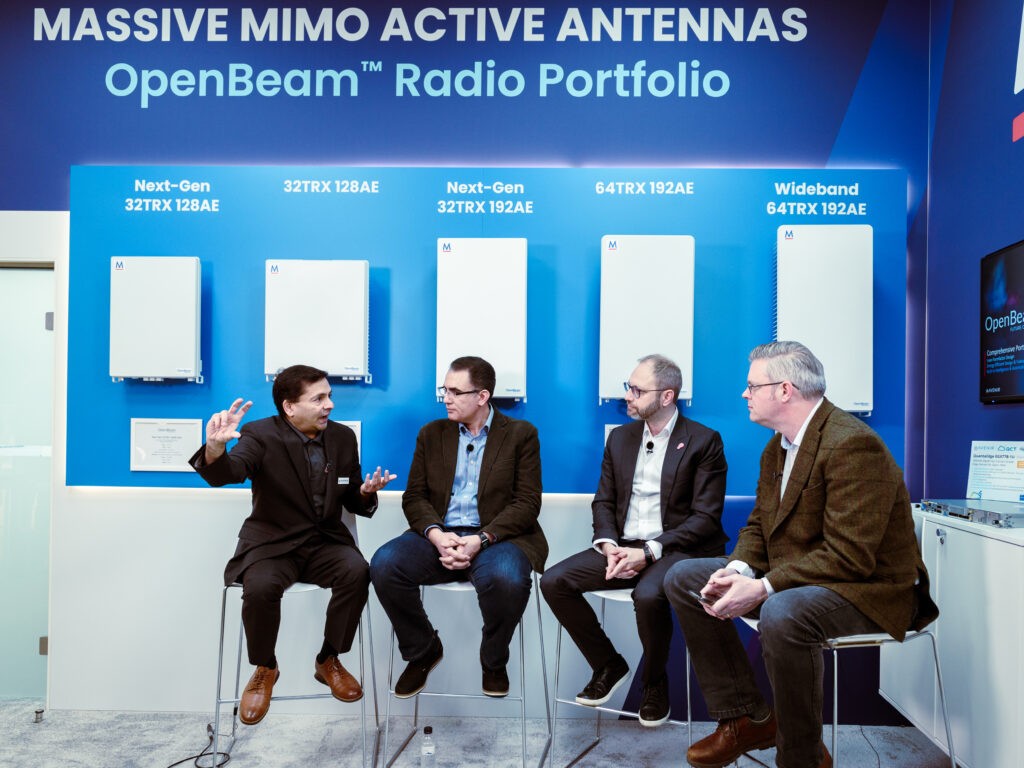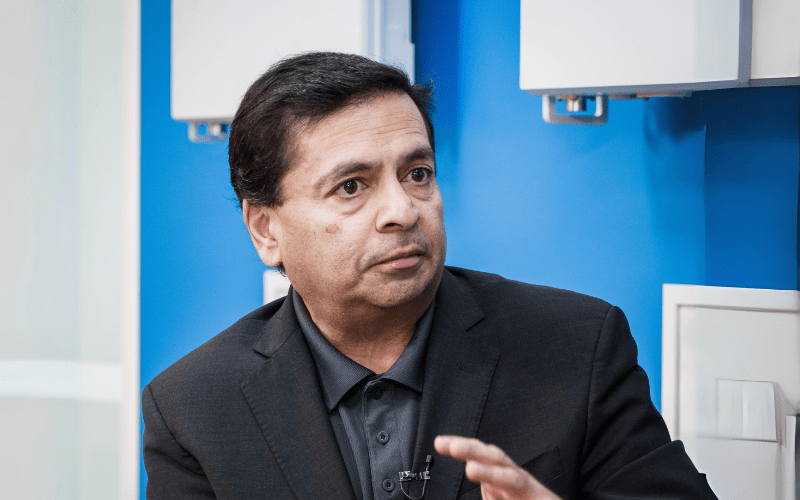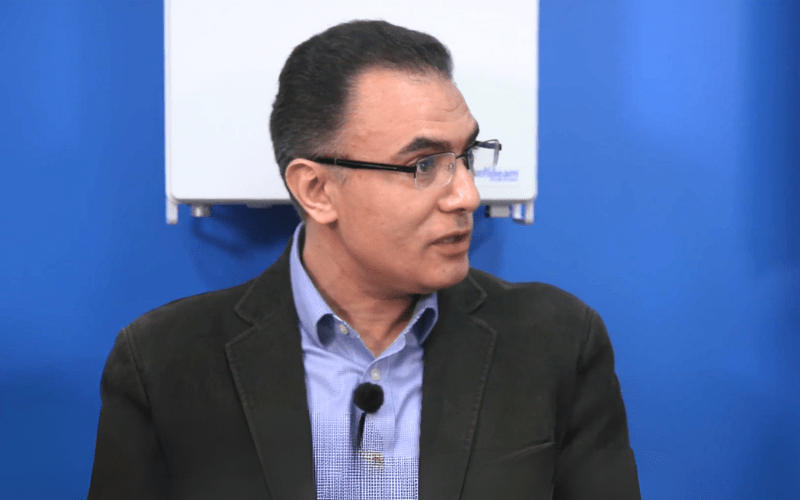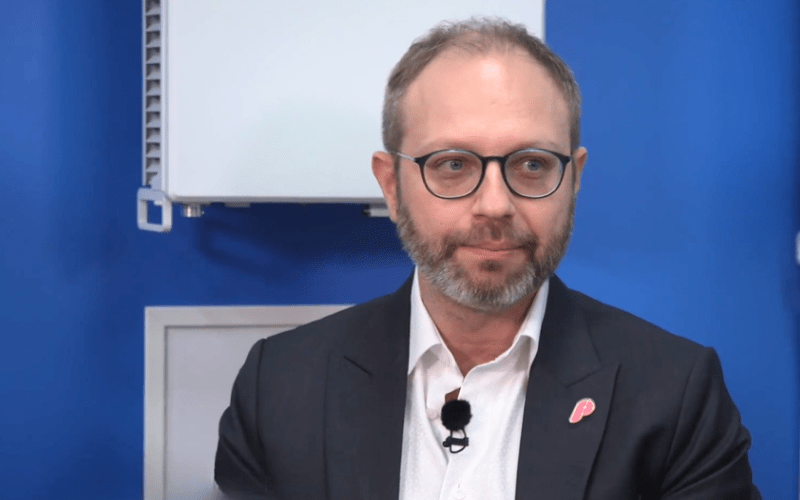Open RAN Past, Present, and Future

At the recent Mobile World Congress show in Barcelona, I was lucky enough to be able to host a panel discussion at the Mavenir stand designed to explore the latest developments in Open RAN.
The panel brought together three different, but complimentary perspectives: BG Kumar, President of Access Networks, Platforms and MDE at Mavenir; Mohamed AbdelAziz, Head of RAN Strategy & Architecture-NSE|CTO at VMO2; and Sam Tabbara, CEO of Paradise Mobile.
The two operators on the panel come at the business from very different perspectives. VMO2 is an established incumbent, building on legacy infrastructure, while Paradise Mobile is a greenfield operator, starting from scratch to take on the incumbents on the island of Bermuda. I turned first to Mohamed to get his perspective on the benefits of Open RAN.
Watch the full panel discussion
“Open RAN to me is not just about the technology and the architecture, it’s about the platform,” said Mohamed. “It’s a different way of building and deploying the RAN and that brings a whole host of benefits and efficiencies as well. For example, by being able to innovate at the pace of the software, which is a much shorter cycle compared to the hardware, that opens up opportunities in bringing new products and services to market a lot quicker than we’re used to. The other area is around efficiency. If we can test and deploy new features a lot quicker that means those benefits can be realised quicker too.”
“Being a greenfield we have the benefit of not having legacy and not having to make trade-offs, as well as learning from the last two decades of telco pain-points and limitations,” said Sam. “So our whole network is cloud-native – it’s one SKU, one x86 Dell, whether it’s under the cell site or in the datacenter – and the idea that we would go to all that trouble with a dozen different vendors and then put a proprietary hardware device at the edge, it would lock me in from a supply chain perspective.
“Everything where you look at open standards and flexibility is giving you more options and hedging your bets in the future. We haven’t figured out how to virtualize a physical antenna or radio yet but everything short of that should not have to be locked in.

BG then picked up on Sam’s last point: “Open RAN just talks about open interfaces and the network is disaggregated,” he said. “It does not mandate what type of technology or philosophy you bring to it. Mavenir has decided to build Open RAN the cloud-native way. We came into the game new to the RAN space, so we started with cloud-native as a requirement and we built microservices based architecture right from day one.
I presumed that being a brownfield operator presents distinct challenges when moving to a new technological platform, so I asked Mohamed to describe some of them. “Upgrading an existing network while continuing to deliver quality of services and good experience to the existing customer is always a challenge, whether it’s Open RAN or a different vendor,” he said.
“We have to look at this in the broader context that we’re moving to virtualization of the RAN. We have started that journey and Open RAN allows us to go faster, but when we start to introduce it into our live environment there are a lot of trade-offs and balances that we’re going to have to consider.”
That move to the virtualization of the RAN was something BG was keen to discuss too. “What cloud-native brings is automation, which has never been a key function of the RAN space, historically,” he said. “So when we come into the space with a cloud-native approach, we bring full automation to the entire stack. Also, operator IT systems are already cloud-native, so the IT team is already very familiar with how cloud-native works, but the access side has always lagged behind. Now we are bring the access side up to speed with the rest.”
I asked Sam whether Open RAN is, in part, about future-proofing the network. In response he nodded to the fact that Mavenir has an advantage in that respect from being a software vendor first. Both he and Mohamed spoke of the flexibility they get from working with Mavenir. BG added that the use of AI allows for constant optimisation, while Mohamed flagged up that this openness also facilitates network exposure and third-party programmability via open APIs.

When asked about their progress in rolling out Open RAN, Mohamed noted that VMO2 started around ten months ago and is already set to being field tests. Sam, as you might expect from a smaller, greenfield operator, has experienced even faster progress. “From the time that we started our build, in just under eight months we were commercially live,” he said.
“That’s core, that’s RAN, that’s everything end-to-end. We don’t have as much spectrum as the incumbents, we don’t have as many sites as the incumbents, but one of the global third-party bench markers has already told us that we’re the fastest network on the island.”
Sam also spoke about significant energy savings, which BG seconded, noting stakeholders across the whole stack are becoming more energy efficient. BG also flagged up technologies such as using AI to put equipment into a ‘deep sleep’ mode whenever it isn’t being used. To conclude the discussion, I asked all three how the technology will evolve over the next few years.

“The key is the ecosystem,” said Sam. “You’re only as fast as your weakest link, whether it’s your people, your processes, or your technology… Where telcos suffer most today is speed to market. They’re not losing business to other telcos, they’re losing to OTTs. Today, if they understand where this is going, telcos can start innovating at the speed of a startup.”
“We have to be pragmatic,” said Mohamed. “Coming from a brownfield network you need to prioritise what is really important and what influences the customer experience. That’s exactly what we’re doing with Mavenir, is focusing on the key features and capabilities that will driver performance and experience.”
“In the next few years I see the ecosystem maturing more and more, and that’s going to benefit the entire industry,” said BG. “What I’m most excited about are the new innovations that nobody is thinking about. All the possible new services that operators can launch on an open system with open APIs make me super excited about what is to come.”
Open RAN can seem somewhat abstract and hard to pin down, even to journalists who write about it regularly. But what I took from this panel discussion is that Open RAN now seems to be accepted as a key component of future mobile networks. While we’re still at an early stage when it comes to its commercial rollout, the flexibility, efficiency, and opportunity to innovate Open RAN offers operators should ensure that most, if not all, of them decide to make that move sooner or later.
*Guest Blog courtesy of Scott Bicheno, Editorial Director, Telecoms.com



